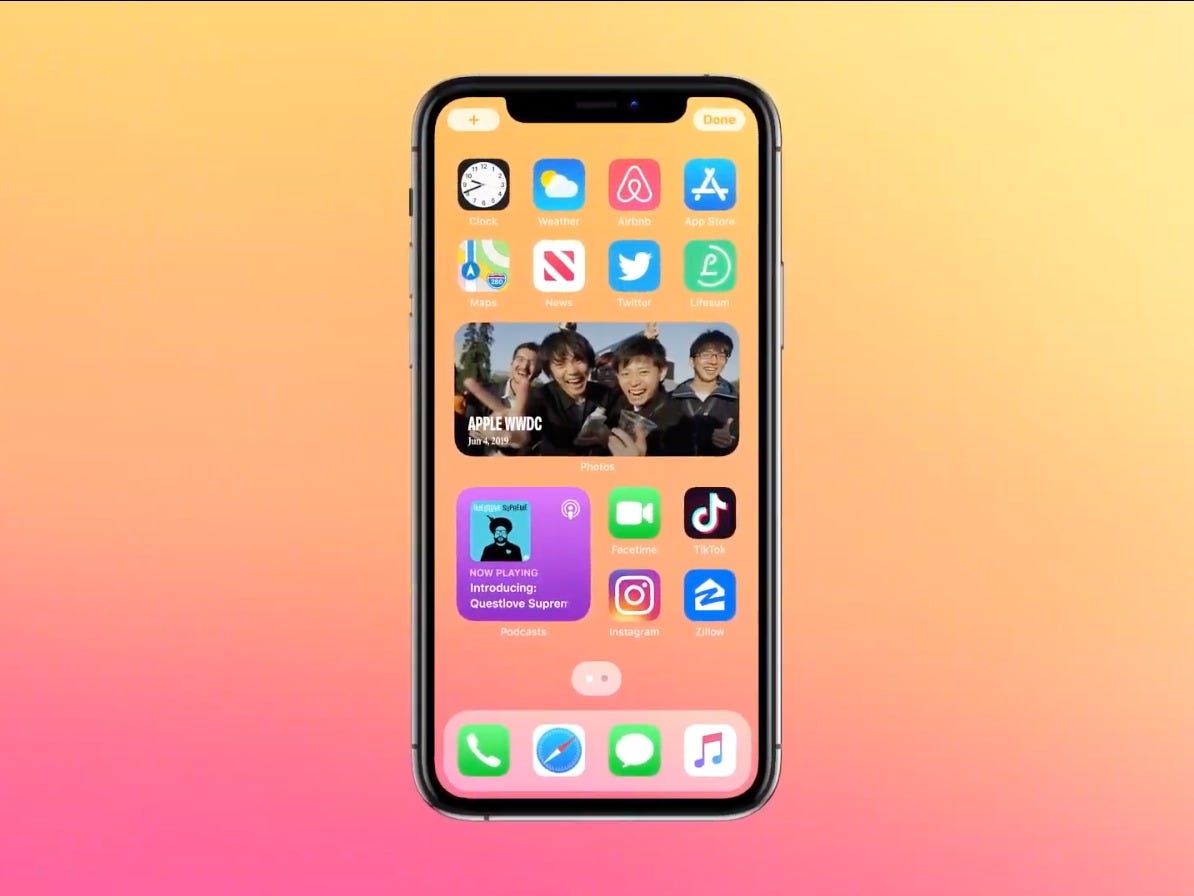- Apple is rolling out the public beta of iOS 14, its next major software update for the iPhone, on Thursday.
- The update brings a bunch of new features to the iPhone that touch nearly all aspects of the operating system, from the iPhone’s home screen to Siri, as well as apps like iMessage and Maps.
- Those interested in installing the new software on their iPhone can do so by navigating to Apple’s beta program website.
- But since it’s the beta version of iOS 14 and not the final software, the software may include bugs and might not run as smoothly as you’re accustomed to.
- Visit Business Insider’s homepage for more stories.
Apple is launching the public beta of iOS 14, the next major software update for iPhones, on Thursday.
The update, which Apple announced at its WWDC event last month, brings a bunch of new features such as the ability to pin widgets to the home screen, a new App Library feature for organizing your apps, the ability to use some features from apps without installing the full program through a new feature called App Clips, and many more capabilities.
Those who want to install the public beta should navigate to Apple’s beta program website on the device you wish to use the iOS 14 beta to get started. From there, you can sign up for Apple’s beta software program or log in if you’ve already registered.
After logging in, you’ll see a link prompting you to enroll your iOS device under the “Get Started” section. This will bring you to a page with instructions for enrolling in the betas for iOS, iPadOS, macOS, and tvOS.
If you're interested in the iOS 14 beta, make sure you're following the instructions under the iOS tab.
Before you move forward with installing the beta, you should back up your iPhone to ensure that no data is lost during the process.
It's important to remember that this is a beta version of iOS 14, which means it may include bugs and might not always run smoothly.
In addition to bringing new customizations to the home screen, iOS 14 also brings privacy improvements, the ability to change the default apps for email and web browsing, and many more changes. Apple typically releases the finished version of the software in the fall to coincide with its new iPhone launch.

